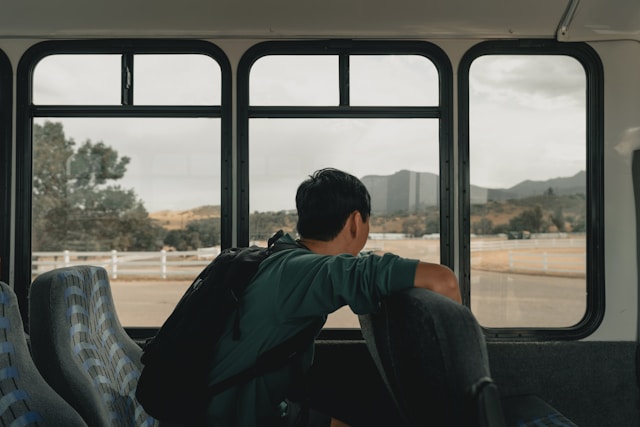Traveling is one of life’s greatest joys, offering new experiences, cultures, and memories. But for people who need mobility aids or deal with physical limitations, travel can also come with challenges. The good news? With proper planning and resources, travel with limited mobility is not only possible it can be deeply rewarding travel.
Whether you use a wheelchair, walker, or simply move a bit slower than you used to, this guide will help you explore the world with confidence. We’ll walk through every stage of accessible travel, from planning and packing to navigating airports, hotels, and tourist attractions.
Why Accessible Travel Matters
Everyone deserves the freedom to explore. For travelers with disabilities or reduced mobility, a little extra preparation goes a long way in ensuring a smooth, enjoyable experience. Accessible travel tips are no longer niche they are essential for millions of people worldwide, including seniors, recovering patients, and people with lifelong conditions.
The key is preparation, flexibility, and using the right tools to help navigate the journey.
Pre-Trip Planning: Start Smart
Good travel with disabilities starts long before you leave home. Early planning can reduce stress and help you avoid unexpected obstacles during your trip.
1. Choose Mobility-Friendly Destinations
Look for cities or countries known for accessibility. Popular options include:
-
Barcelona, Spain (wheelchair-friendly sidewalks and beaches)
-
Sydney, Australia (excellent public transit access)
-
Washington D.C., USA (free wheelchair rentals in museums)
-
Vienna, Austria (well-designed infrastructure for disabled travelers)
Do some research on local laws, accessibility standards, and reviews from other travelers with limited mobility.
2. Book Accessible Accommodations
When booking hotels or Airbnbs:
-
Confirm whether they offer ground-floor rooms or elevators
-
Ask about roll-in showers and grab bars
-
Make sure entrances and hallways are wide enough for wheelchairs
Contact properties directly to confirm your needs will be met, even if you see “accessible” listed online.
3. Prepare Medical and Travel Documents
-
Bring prescriptions and extra medication
-
Have a doctor’s letter explaining any medical conditions
-
Get travel insurance that includes medical and mobility device coverage
Packing Essentials for Mobility
The right gear can make all the difference when you’re traveling with mobility aids or health concerns.
What to Pack:
-
Collapsible or lightweight wheelchair, scooter, or walker
-
Chargers and spare batteries for powered devices
-
Cushion or support pillows for long journeys
-
Folding ramp if needed for small elevation changes
-
ID tag with medical information
Pack smart, and prepare for the unexpected by bringing a few extra medical supplies just in case.
Air Travel With Limited Mobility
Flying doesn’t have to be stressful, even when you need assistance. These accessible travel tips can help make flying smoother:
1. Request Assistance Ahead of Time
When booking your ticket, request:
-
Wheelchair assistance (from check-in to the gate)
-
Pre-boarding so you can get settled without the rush
-
Accessible seating (bulkhead or aisle seats if available)
2. Know Your Rights
In the U.S., the Air Carrier Access Act protects travelers with disabilities. Airlines must:
-
Assist with boarding and deplaning
-
Transport wheelchairs at no extra cost
-
Not discriminate based on disability
Most countries have similar rules look them up before you go.
3. Pack a Carry-On Survival Kit
Include medications, snacks, documents, and anything you’ll need in case of delays. Checked mobility aids can sometimes be delayed, so it’s good to have a backup plan.
Getting Around: Ground Transportation
After landing, you’ll need reliable ways to move around.
1. Use Accessible Taxi Services or Ride-Share Options
Many major cities offer accessible taxis. Apps like Uber and Lyft also offer wheelchair-accessible vehicle options in select areas.
2. Rent an Accessible Vehicle
If you’re planning a road trip or extended stay, rent a van with a wheelchair ramp or hand controls. Book far in advance availability is often limited.
3. Public Transportation
Research whether local buses or trains are wheelchair-friendly. Look for low-floor buses, elevators at stations, and accessible platforms.
Comfort and Safety During the Journey
Maintaining your energy and well-being is key while traveling with mobility concerns.
1. Pace Yourself
Plan for breaks between activities, and avoid over-scheduling. Listen to your body.
2. Stay Hydrated and Prepared
Pack a refillable water bottle, snacks, and comfortable clothing. If you have dietary or temperature sensitivities, plan accordingly.
3. Locate Accessible Bathrooms
Use apps or maps to find clean, accessible restrooms wherever you go. Malls, museums, and hotels are often reliable options.
Tools and Apps for Accessible Travel
Technology can be your best friend when navigating unfamiliar places with limited mobility.
Helpful Apps and Platforms:
-
AccessNow – Maps accessibility of public places worldwide
-
Wheelmap – Crowd-sourced accessibility ratings for locations
-
Google Maps – Shows wheelchair-accessible transit routes in some cities
-
iTranslate or Google Translate – Helpful for communicating needs abroad
-
TravAble – Helps locate accessible hotels and services
Using these tools can help you avoid surprises and find places that suit your needs.
Real-Life Inspiration: You’re Not Alone
Many people travel the world successfully with disabilities and share their journeys online. Travel bloggers and advocates like Cory Lee (Curb Free with Cory Lee) provide personal stories, reviews, and tips for accessible adventures across the globe.
These voices can inspire confidence and help you visualize what’s possible with the right approach.
Conclusion: Yes, You Can Travel
Travel with limited mobility doesn’t have to be overwhelming. With the right preparation, mindset, and support, the world becomes more accessible than ever.

